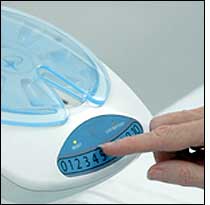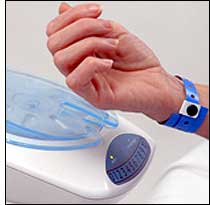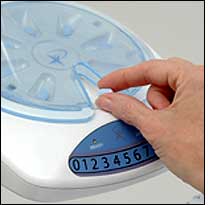Across the United States, a nursing shortage is stressing the health-care system—and studies show the problem could get much worse. Recent research performed by Peter Buerhuas, a Vanderbilt University professor, workforce analyst and registered nurse, indicates the shortage could spike to 500,000 by 2025, thanks in part to the 78 million aging baby boomers.

A product developed by Avancen, a medical device startup company in Ormond Beach, Fla., might not be able to erase that labor shortage, but it could help alleviate one stress the shortage inflicts on nurses and patients alike: pain-relief drug administration. After an operation, hospital patients are generally provided with pain medication, administered intravenously.
Many of these IV devices include an automated dispensing system enabling a patient to receive additional medicine by pressing a button as the previous dose wears off (the medication is dispensed based on predetermined dosage and frequency parameters programmed into the device).
But as the patient moves off the IV and begins receiving oral pain medication, administering the drugs is a manual process that takes valuable time away from a nurse’s schedule and often requires patients to wait a considerable amount of time for the pills, says Sharon Conley, Avancen’s CEO. Conley worked as a medical oncologist at the Halifax Health Medical Center in Daytona Beach, Fla., before founding Avancen in 2004, and conceived of the company’s first product, Medication on Demand (MOD), which allows patients to access their own medication using a bedside dispenser.
In its first iteration, the MOD consisted of a mechanical pill dispenser controlled via an input switch and a timer. A patient would press a button on the machine, and if enough time had passed since it last dispensed a pain pill, based on that person’s prescription, it would provide another. But once she began collaborating with product engineers at Soneticom, Conley says, she learned that adding RFID technology to the mix could make the device both a more secure and more automated dispensing tool.
Here’s how it works: After being taken off of an IV pain medication drip, a patient is assigned an RFID-enabled wristband containing a passive 13.56 MHz RFID inlay compliant with the ISO 15693 standard. Encoded to the wristband’s inlay is that patient’s medical record locator number, which the hospital utilizes to track that individual’s treatment log and drug prescriptions. The patient’s nurse receives the pain pills, which are delivered from the hospital’s pharmacy in a sealed tray that fits into the MOD, which includes an integrated RFID interrogator. The nurse then programs the device using a Bluetooth communication link between the MOD and a handheld or mobile computer that runs a software program developed by Avancen.
“The software is simple,” Conley says. “It uses a wizard that guides the nurse through the steps to program the MOD.” The nurse inputs the patient’s oral medication prescription dosage and frequency during the programming process, which requires that the patient hold the wristband up to the MOD’s RFID interrogator to be read. The programming process also requires the nurse to present his or her RFID card, which carries an ISO 15693 RFID inlay encoded with a number identifying that employee, to the interrogator as well. In response to reading the card, the body of the MOD opens to allow the nurse to remove an empty pill tray or insert a full one.
To prompt the MOD to dispense pain medication, the patient holds the wristband up to the device and selects a number on a sliding dial to indicate the pain level, on a scale of 1 to10. This enables the MOD to be used in compliance with a mandate by the Joint Commission on Accreditation of Hospitals, requiring hospitals to take regular assessments of patient pain levels during drug administration.
The patient wristbands are provided by Proximities, which makes RFID-based wristbands used for identification, age verification, access privileges and customer relationship management (CRM) data acquisition. Proximities employs a patented design that integrates an RFID inlay antenna into the wristband’s clasp.
Once it is secured onto a person’s wrist, the only way to remove the wristband is to cut it open, breaking the linkage between the inlay’s antenna and its RFID chip. This ensures that if a patient removes the wristband, no one else—another patient, for instance, or a hospital staff member—can use it to access the pain medication within the MOD. “It’s the RFID technology that provides the security for the device,” Conley says.
In 2006, the MOD was used in a clinical trial involving cancer patients at the Halifax Health Medical Center. Results from that trial, according to Avancen, showed that 95 percent of patients involved in the study found the device easy to use and said they were better able to control their pain by using it rather than relying on nurses to provide the pills. What’s more, 84 percent of nurses involved in the study said the MOD saved them time.
According to Conley, the Halifax hospital is gearing up for additional trials in the post-operation wards within its orthopedics and heart surgery areas. A single MOD unit and a software license cost $2,995, she says; the wristbands and pill trays are sold separately.



